We’re excited to introduce a new contributor to the The Run Commuter! Nick Pedneault joins us from Ottawa, Canada and will be writing about running in harsh winter conditions up north, as well as sharing tips, advice, and gear reviews from which all run commuters, in any climate, can benefit. Welcome to TRC, Nick!
——————————————————–
[fusion_builder_container hundred_percent=”yes” overflow=”visible”][fusion_builder_row][fusion_builder_column type=”1_1″ background_position=”left top” background_color=”” border_size=”” border_color=”” border_style=”solid” spacing=”yes” background_image=”” background_repeat=”no-repeat” padding=”” margin_top=”0px” margin_bottom=”0px” class=”” id=”” animation_type=”” animation_speed=”0.3″ animation_direction=”left” hide_on_mobile=”no” center_content=”no” min_height=”none”]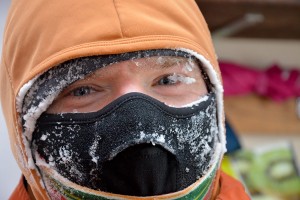
My name is Nicolas Pedneault, and I am a run commuter from the Ottawa area, Canada. I have been run commuting for 6 years now, and I am planning on doing so for as long as I can. Run commuting for me was the result of many factors: I wanted to keep doing sports like I used to before I was married and had kids, but without neglecting family life; I did not have a parking spot at work; and I wanted a solution to get to work which was valid year round. One year, I cycled to work in the winter; in May, my bike was as good as junk because of the salt they use to de-ice roads. Public transit was a solution, but there is not much sports involved in taking the bus. To make matters worse, OC Transpo – the Ottawa public transport company – went on a 2-month long strike in 2009. That was the last straw for me: I started running to get to and from work.
My total daily commute is between 16 and 24 kilometres (10-15 miles), every day of the week. Running in Ottawa year-round means facing temperatures as high as 36ºC (97ºF) and as low as -35ºC (-31ºF). Consequently, it requires a wide variety of gear to face the elements.
Running year-round in Ottawa means running through some pretty harsh weather – snowstorms, freezing rain, blistering cold, tornados, etc. However, in the present post, I will stick to the blistering cold, describing the gear I use to run at temperatures between -30 ºC and -35ºC (-22 ºF and -31ºF). I have no preferences in terms of brands; consequently, the pictures included in this post and the brands are mentioned for general information purposes only. However, the brands mentioned are the ones I use.
Feet
To prevent my feet from freezing, I combine a pair of thin liner socks (Wigwam Ultimate Liner Pro) with a pair of heavier merino wool socks (Great Canadian sox company super-wool hiker GX socks). Although I wear 2 pairs of socks, it all fits nicely in my normal running shoes. For winter, I use standard trail runners (either Saucony Peregrine or Brooks Cascadia). I know speciality shoes are now available for cold running (for example, Salomon SnoCross CS), but I have yet to venture on that road since outside winter, these are of no use.
Legs
In that order, I wear a pair of thermal tights (MEC Mercury tights), a pair of running shorts on top of the tights and a pair of very generic wind pants (MEC Flux pants). I experimented once during a winter marathon (Ottawa Winterman, February 2013, -29ºC / -20ºF) without the shorts between the 2 layers; I ended up having to stick my mitts in my pants to warm up my manhood. Suffice to say that I highly recommend wearing shorts over the tights in winter. In my backpack, I also carry an extra pair of wind pants which are a size larger than the first one; if it gets really windy or suddenly colder than expected, I can throw them on over everything else.
[/fusion_builder_column][fusion_builder_column type=”1_1″ background_position=”left top” background_color=”” border_size=”” border_color=”” border_style=”solid” spacing=”yes” background_image=”” background_repeat=”no-repeat” padding=”” margin_top=”0px” margin_bottom=”0px” class=”” id=”” animation_type=”” animation_speed=”0.3″ animation_direction=”left” hide_on_mobile=”no” center_content=”no” min_height=”none”]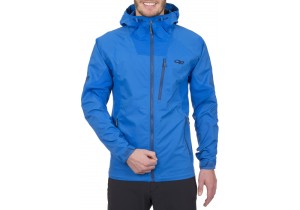
Top
As always, I make sure to use many layers. My base layer is a 150-weight merino wool long sleeve shirt. My second layer is a 150-weight merino wool t-shirt. Over time, I found this combination of merino wool garment to be the best in terms of weight and sweat absorption. My third layer is either an old long sleeve polar fleece shirt or a Polartec power dry hoody with thumb holes (MEC T3 hoodie). The principle behind this combination of layers is pretty simple: the natural fibre near my skin is less susceptible to develop bad odours than the synthetic fibres. My final layer is a soft shell jacket with a hood (Patagonia Ascensionist or Outdoor Research Enchainment.) In cold weather, I prefer soft shells to hard shells because they are much better at letting perspiration out.
Hands
Mitts. No gloves. Just mitts. Again, I use a small pair of mitt (hand knitted by my wife’s aunt) and a bigger one on top of it (MEC overlord mitts.)
Watch
One day, it was so cold, my watch display totally froze. To avoid that, I now wear it on top of my jacket at the wrist, and I throw the bottom portion of my mitt over the watch. If you are doing intervals, it is a bit annoying to have to push your mitt up to press the buttons, but it is far less annoying than a frozen watch.
[/fusion_builder_column][fusion_builder_column type=”1_1″ background_position=”left top” background_color=”” border_size=”” border_color=”” border_style=”solid” spacing=”yes” background_image=”” background_repeat=”no-repeat” padding=”” margin_top=”0px” margin_bottom=”0px” class=”” id=”” animation_type=”” animation_speed=”0.3″ animation_direction=”left” hide_on_mobile=”no” center_content=”no” min_height=”none”]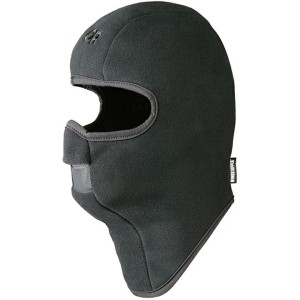
Head
The next piece of kit is by far the most important one for me, and this time, the brand is important. My Sonic Outdoor Research Balaclava allows me to stay warm while being able to breathe properly although the air is very cold. Many years ago, I was running with a small scarf over my mouth. Over time, it would get wet and I would eventually auto-waterboard myself from time to time. This was awful, and I looked for a balaclava that would allow me to breathe while keeping me warm. The Sonic has a special screen in front of the mouth that never freezes. It is also far away enough from my mouth to create a warm up chamber just in front of it. Because of that, I end up breathing air which is a few degrees warmer than the ambient one. Since I tend to suffer from performance induced asthma in the winter, these few degrees mean the difference between coughing all day or not at all. Over it, I will normally use a Buff around my neck, and another one over my head. For good measure, I also carry a third safety Buff in my backpack, just in case.
Backpack
I currently use a Deuter Race X backpack. It is a bit small (12 litres or 730 cubic inches), but for a bag that cost me CAD$54, I think it is near perfect. I always carry a safety jacket in it (MEC Uplink jacket with hood), which I can throw on top of everything if get too cold or if I suddenly have to stop running. As mentioned above, I also carry in it an oversized pair of wind pants, an extra Buff, my lunch and some clothes. A point worth mentioning: in winter, the simple fact of having a bag on your back will keep you warmer as it offers an additional layer of insulation.
That’s it! You’re ready to run in the midst of the Canadian winter or the polar vertex. Now, I must be honest: running in these temperatures is never that great, but I have found that these somewhat miserable runs made all summer runs great no matter what afterwards.
[/fusion_builder_column][fusion_builder_column type=”1_1″ background_position=”left top” background_color=”” border_size=”” border_color=”” border_style=”solid” spacing=”yes” background_image=”” background_repeat=”no-repeat” padding=”” margin_top=”0px” margin_bottom=”0px” class=”” id=”” animation_type=”” animation_speed=”0.3″ animation_direction=”left” hide_on_mobile=”no” center_content=”no” min_height=”none”]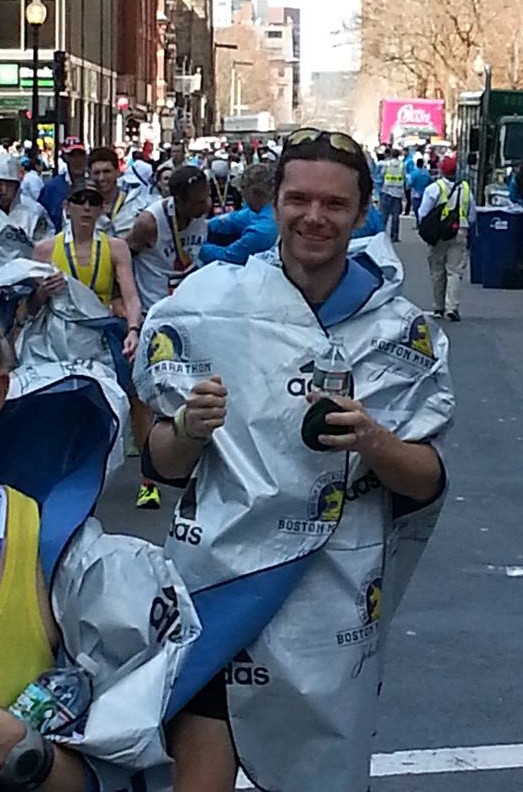
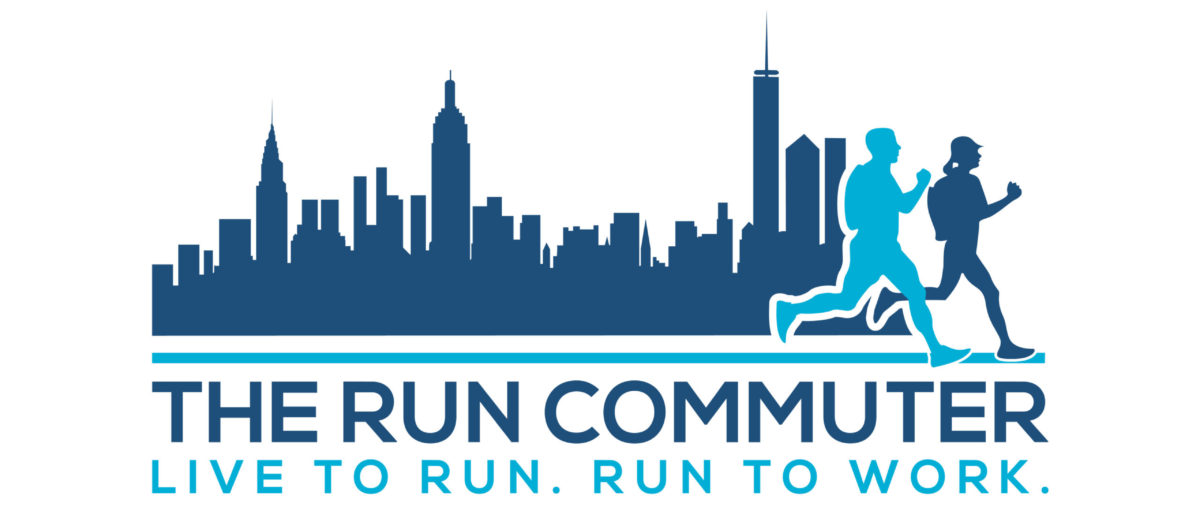
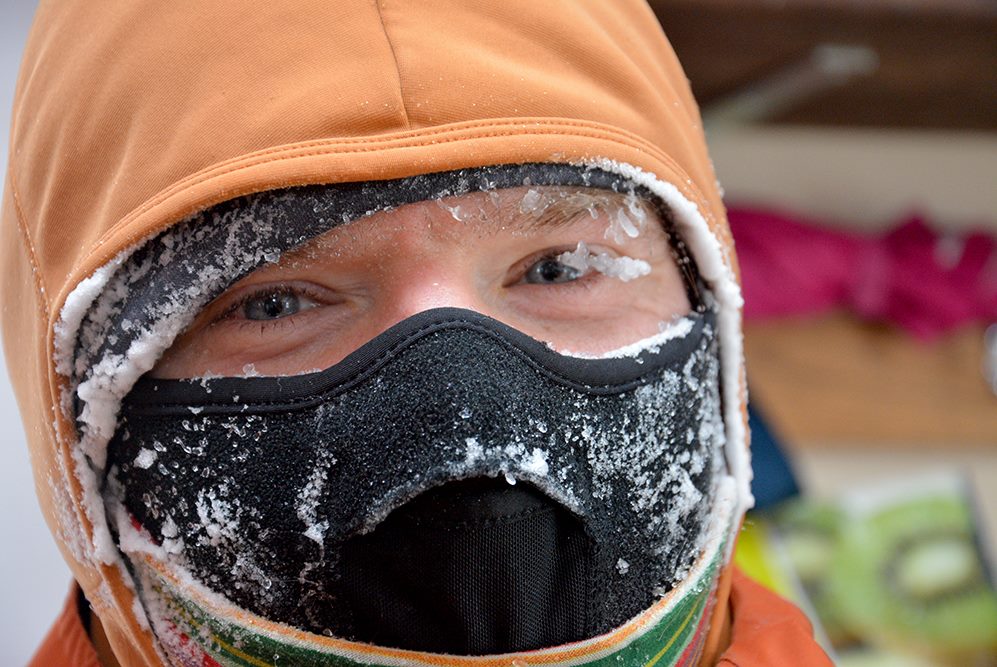
OMG…and just minutes before I read Pedneault’s post I was complaining about the Sydney temperatures dropping to the teens (Celsius) with the arrival of autumn! A good reminder that life is relative…
Wow, just wow. “-30 ºC and -35ºC (-22 ºF and -31ºF)” What does that even mean?? (I live in Northern California.)
This is very helpful. I live in Edmonton and the winter here is as harsh as Ottawa. I am new to winter running and I am still trying to piece together my winter gears.
Glad it helped! I am planning on updating it soon. Stay tuned! The aim this time will be again to stay warm despite the weather, but reduce the weight of all the gear.